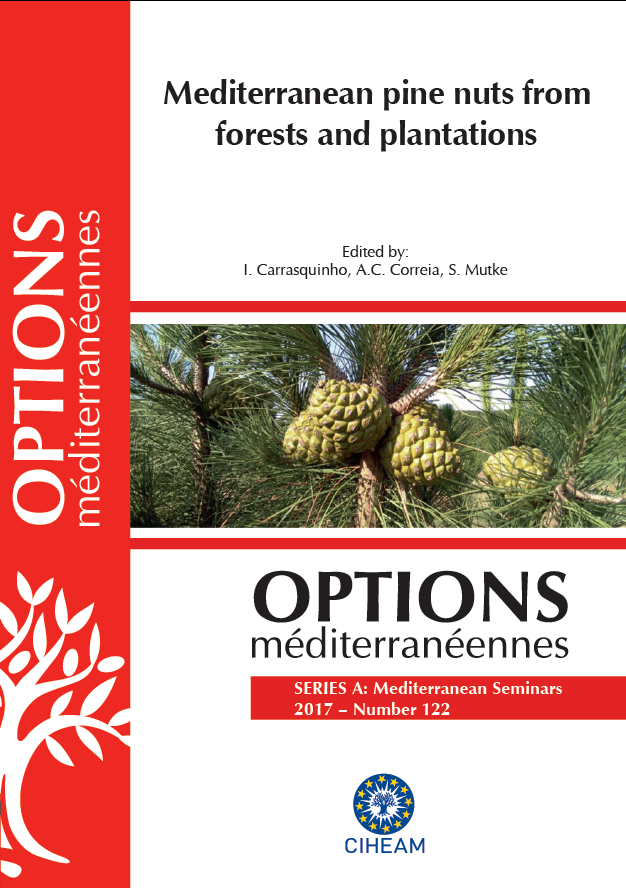| Article précédent | p. 111-117 | Article suivant |
State of stone pine (Pinus pinea) forests in Turkey and their economic importance for rural development
Stone pine is one of the most characteristic tree species in Mediterranean landscape, due to the ancient use of its edible seeds. In Turkey, specifically, stone pine (Pinus pinea) is the most valued pine species because of its multiple use. Multi-objective management of stone pine forest focuses on timber and pine nut, as the main products, as well as other beneficial services such as soil protection, recreational use and biodiversity. Among these ecosystem services and products, nut production is currently the most profitable one for the owners of stone pine forests and villagers. Pine nut production in stone pine areas promotes rural development by providing employment and supplementary income for forest villagers. It can play an economic role by increasing income level of forest villagers based on its primary and secondary products. In Turkey, the incomes from pine nut production are around three times greater than the revenues from timber production. In this study, changes in size and structure of stone pine forests in Turkey during 10 years were analyzed in terms of age class, development stage, crown closure, tree mixture, functions and productivity. In addition, the amount of cones in number and weight, in-shell pine nut and kernel production were estimated based on age classes within some regional directorates of forestry (OBM) by using traditional estimation equations of constant per tree cone yields by age classes. Turkey would have a potential to produce about 600,000 tons cones and 15.600 tons pine nut kernels, which with current market prices would be worth US$ 320 million and 550 million, respectively. These figures show that stone pine forests in Turkey can make an important contribution to the rural development and global pine nut market. However, this gross estimation of pine cone or nut was based only on age class distributions and has not taken into account several factors such as climate-driven yield variation or losses due to insect damages. For a better integration of cone or kernel production into forest management plans and the development of a sustainable management oriented to these products will require more realistic empirical yield models. Such models must integrate climate factors and stand variables for allowing more accurate predictions of the actual annual cone and nut production.
- [ Afficher ]
- [ Télécharger ]
- [ Exporter la citation ]
Vous pouvez télécharger la citation au format :
- [ Imprimer ]
-
Mots-clés
PINUS PINEACiter cet article
Küçüker D.M., Baskent E.Z. State of stone pine (Pinus pinea) forests in Turkey and their economic importance for rural development. In : Carrasquinho I. (ed.), Correia A.C. (ed.), Mutke S. (ed.). Mediterranean pine nuts from forests and plantations. Zaragoza : CIHEAM, 2017. p. 111-117. (Options Méditerranéennes : Série A. Séminaires Méditerranéens; n. 122). 2. International Meeting on Mediterranean Stone Pine for Agroforestry : AgroPine2016, 2016/05/18-20, Oeiras (Portugal). http://om.ciheam.org/om/pdf/a122/00007248.pdf



